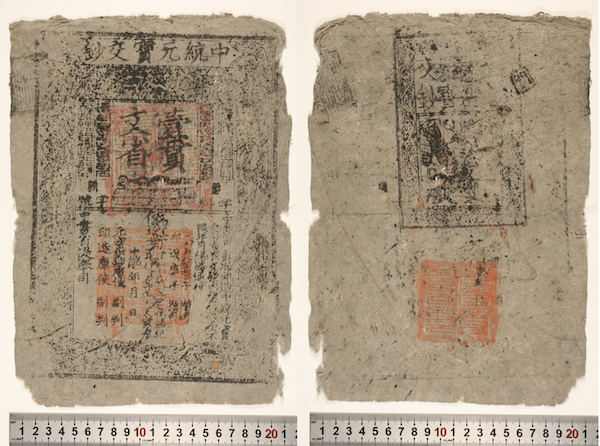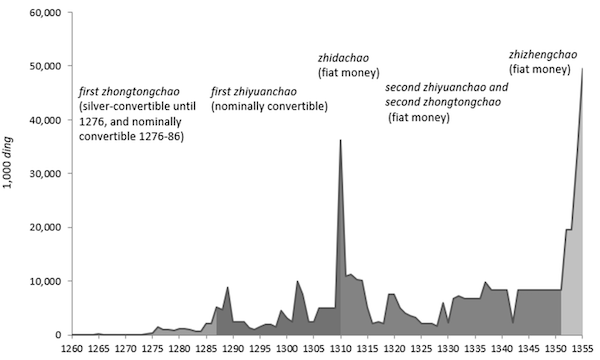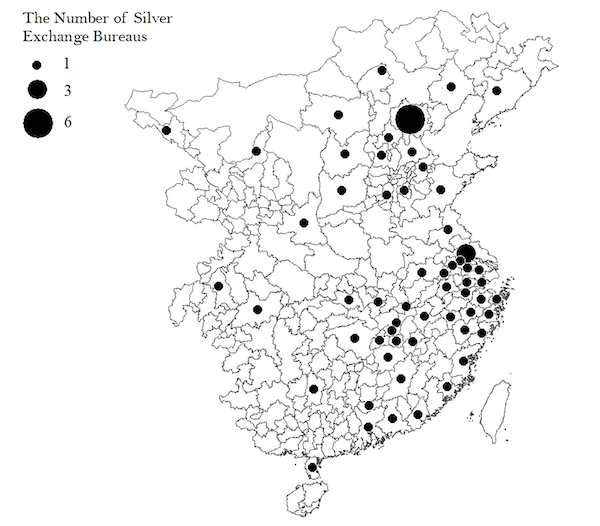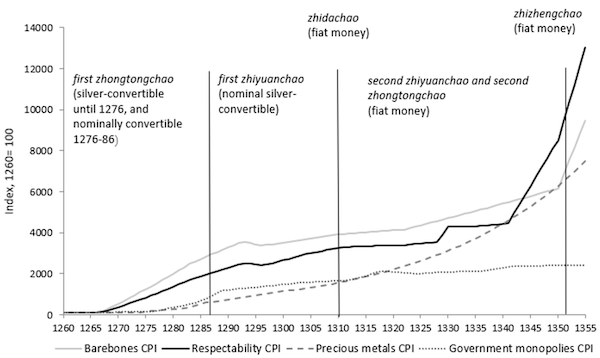By Hanhui Guan, Affiliate Professor at Peking College, Nuno Palma, Professor of Economics within the Division of Economics, and Director of The Arthur Lewis Lab for Comparative Growth at College Of Manchester, and Meng Wu, Postdoc Fellow in Economics at College Of Manchester. Initially printed at VoxEU.
In early-Thirteenth century China, the Mongols launched the silver normal, the primary paper cash in historical past to be backed by a valuable steel. This column research the rise and fall of paper cash in 13-14th century China over three levels: full silver convertibility, nominal silver convertibility, and fiat normal. Navy stress particularly led to the over-issuance of cash, particularly beneath the fiat normal. Ultimately, over-issuance led to excessive inflation because the dynasty collapsed. China’s historic expertise underscores that financial prosperity hinges on the efficient execution of sound insurance policies, a course of influenced by the political panorama.
China’s financial efficiency over latest years has raised international issues. In comparison with its previous 4 a long time of miraculous development, the nation is now going through an financial slowdown. A property market disaster, inventory market droop, shopper worth fall, and foreign money depreciation have triggered nervousness about whether or not the world’s second-largest economic system is coming into a recession. The uncertainty in regards to the nation’s future additionally prompts Chinese language policymakers to recalibrate a few of its insurance policies and search new sources for development (De Soyres and Moore 2024). In a latest discuss, President Xi emphasised high-quality monetary growth. In accordance with Xi, an array of parts will speed up the development of a contemporary monetary system with Chinese language traits: a powerful foreign money, a powerful central financial institution, robust monetary establishments, robust worldwide monetary centres, robust monetary regulation, and a powerful monetary expertise pool (Xinhua 2024).
Wanting again to Chinese language historical past, we are able to discover that when managing the state, Chinese language rulers and their ministers have usually been progressive in creating financial insurance policies and designing monetary devices. As early because the sixth century BCE, the well-known thinker and politician Guan Zhong famous that regulating the amount of sunshine cash (debased cash) in relation to heavy cash (wonderful cash) was a “mutual relationship between baby and mom”. Later, within the eleventh century, the primary paper cash, known as jiaozi, appeared in components of China. Within the early Thirteenth century, following the conquering of North China, the Mongols launched the silver normal, the primary valuable steel normal backing paper cash in historical past. When Kublai established Mongol dominance over Mongolia, China, and Korea, founding the Yuan Empire in 1271, he introduced that silver-backed paper cash was the only real authorized tender. From then on, a paper cash economic system, backed by silver, changed a beforehand chaotic financial system that blended varied varieties of paper cash with copper cash, iron cash, and silver ingots (Determine 1).
Determine 1 The evolution of foreign money codecs from 600 BCE to the current

Supply: Based mostly on von Glahn (2016: 1–294).
In a latest paper (Guan et al. 2024), we research the rise and fall of paper cash in Yuan China (Determine 2 exhibits an instance). Based mostly on a wealth of printed main sources, we constructed a brand new and complete dataset of the Yuan Dynasty’s annual cash points, worth indices, imperial grants, inhabitants, taxation, warfare, and pure disasters. The information sequence, substantiated with qualitative historic proof, permits us to check the evolution of the Yuan Empire’s financial regimes, look at the connection between paper cash points and the federal government’s fiscal constraints, and examine the components that designate the over-issuance that ultimately led to excessive inflation because the dynasty collapsed.
Determine 2 A 1 guan notice zhongtong yuanbao jiaochao 中统交钞 issued by the Yuan

Observe: Dimension: 34x20cm. Preserved within the China Numismatic Museum in Beijing. Reproduced with permission.
Determine 3 plots the annual nominal cash points. It exhibits the Yuan authorities issued 4 paper monies in whole, specifically, the zhongtongchao (1260–86), first zhiyuanchao (1287–1309), zhidachao (1310), second zhiyuanchao (1311–51), and zhizhengchao (1352–68). Regardless of its initially modest portions, the issuance of the zhongtongchao elevated steadily over time. The issuance of the second paper cash, zhiyuanchao, was meant to sort out the depreciation of the zhongtongchao. Throughout its 23 years in circulation, the annual issuance of the zhiyuanchao remained comparatively secure.
The third paper cash, the zhidachao, circulated for just one yr, however, in contrast with the primary and second paper cash, the dimensions of the issuance was hanging. The issuance was a fiscally motivated response to a regime change: it adopted the enthronement of the third Khan, Külüg (r. 1307–1311), who seized energy by a army coup. Nevertheless, he died abruptly just one yr later, and the zhidachao was deserted.
From 1311 to 1350, each the zhongtonchao and the zhiyuanchao have been reintroduced, and the issuance of paper cash diverse from 2 million to 11 million ding. The final paper cash sort, the zhizhengchao, was issued in 1352. In contrast with the earlier points, the annual issuances have been much more hanging. Inside two years, the annual issuance soared from 20 million to 50 million ding. Up to date scholar Wang Yun wrote that unrestrained printing of paper cash made it into nothing however empty script (von Glahn 1996: 61–3).
Determine 3 Annual nominal cash points, 1260–1355

Notes: The ding 錠 was the unit of account of silver, with 1 ding of silver being equal to 50 liang of silver. The Yuan authorities used ding because the unit of account to report fiscal revenues and expenditures, and controlled that 1 ding was equal to 50 guan zhongtongchao. Our final yr is 1355 as a result of no knowledge exists after that yr.
Sources: See Guan et al. (2024).
Based mostly on historic narratives, we divide the Yuan’s financial regimes into three levels: full silver convertibility interval (1260−75), nominal silver convertibility interval (1276−309), and fiat normal (1310−68). Through the first of those, the issuance of paper cash was backed by a amount of silver at a set change charge. All through the nominal silver normal, the brand new issuance was not totally backed by reserves and was solely convertible when the native change bureau had silver. When the Yuan authorities started to print the third paper cash, zhidachao, in 1310, silver didn’t play the reserve function, and thus, the financial system modified to de jure fiat cash after 1310 (Determine 4).
Determine 4 Financial requirements through the Yuan Dynasty

Supply: Our determine, primarily based on the knowledge in Peng (2020: 501–28).
Determine 5 plots the areas of silver change bureaus within the 1290s. It exhibits that the federal government arrange change bureaus at provincial-level cities, lu 路, or prefecture-level cities, fu 府 and zhou 州. Folks may change paper cash for silver at a reduction of 70% to 80% of face worth, convey broken notes, and procure new notes in change by paying a small fee price of three%. For individuals who lived in west or central China, there have been fewer locations for them to redeem silver. Given the dimensions of China, it might have been expensive for individuals who lived within the distant components of the west or those that lived in smaller cities to journey to cities to change silver.
Determine 5 Location of silver change bureaus, across the 1290s

Notes and supply: See Guan et al. (2024).
To evaluate the worth of actual cash points over time, we assemble 4 worth indices: a barebones shopper worth index (CPI), a respectability CPI, a authorities monopolies CPI, and a valuable metals CPI. As Determine 6 illustrates, the empire started to expertise inflation within the 1270s, when the issuance of zhongtongchao started to develop. The value stage additionally signifies that the 1290s to the 1330s loved worth stability. Apart from this, we discover that over the past decade for which knowledge is offered, 1346–1355, the compound inflation charge was 12.7%, equivalent to an approximate doubling of the worth stage from 1346 to 1355. All 4 worth indices elevated over these 96 years however at completely different magnitudes, as seen within the determine.
Determine 6 4 worth indices, 1260–1355

Notes: For methodological particulars, see Guan et al. (2024).
Supply: Our calculations are primarily based on the underlying knowledge collected by Li (2014).
Up to date observers and students documented that warfare, imperial grants, and pure disasters have been main causes of the fiscal actions noticed. Utilizing econometric evaluation, we explored how these components correlated with the portions of paper cash issued and studied the function of the silver normal in regulating paper cash points. We discover that army stress, notably civil struggle, generated fiscal calls for that led to the over-issuance of cash. In contrast, pure disasters and imperial grants didn’t set off the over-issue of cash. Warfare was more likely to extend paper cash points beneath the fiat normal than through the silver normal interval.
Our findings echo research of the classical gold normal (Bordo and Kydland 1996, Eichengreen 1987, Obstfeld and Taylor 2003). We present that equally to the classical gold normal, the complete silver normal (1260–1275) in Yuan China proved a dedication mechanism that constrained the over-issuance of paper cash – whereas it lasted. The nominal silver normal proved profitable on condition that the worth stage remained secure into the primary half of the fiat normal interval. Nevertheless, by the point the Ming toppled the Yuan Dynasty in 1368, paper cash was near nugatory, and cities and cities have been resorting to a barter economic system (von Glahn 1996: 70). Following the particular collapse of paper cash beneath the fiscally weak Ming regime, China must wait a number of centuries to return to paper cash, influenced by Western expertise and establishments (Palma and Zhao 2021).
China’s historic expertise underscores the notion that sustained success can’t be assumed, each all through historical past and in up to date instances. Financial prosperity invariably hinges on the efficient execution of sound insurance policies, a course of profoundly influenced by the dynamic political panorama.

